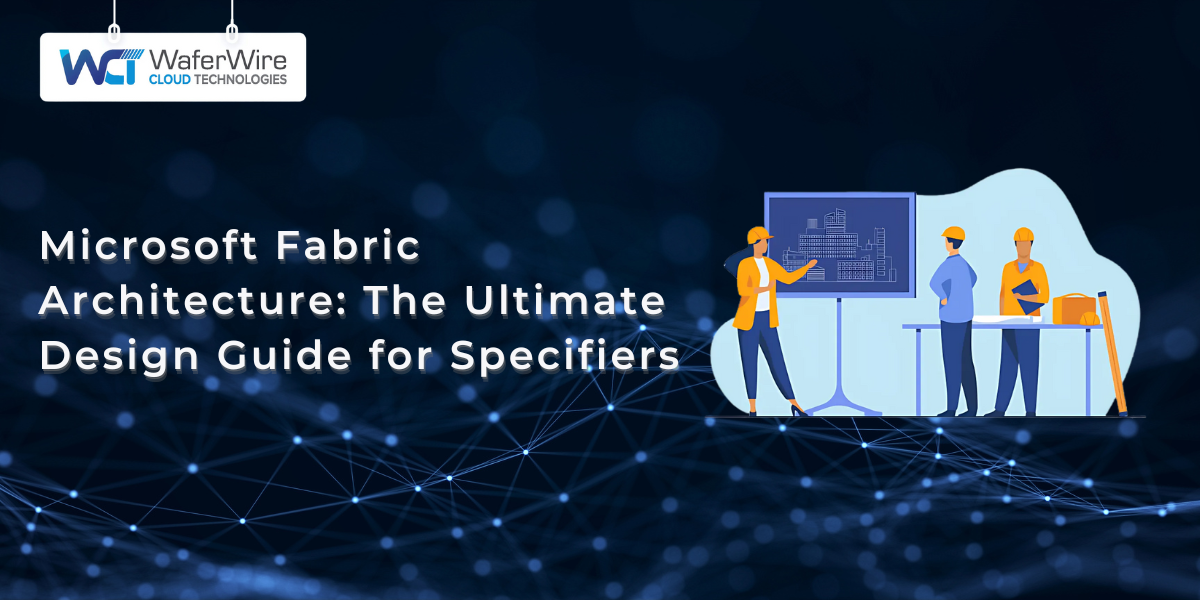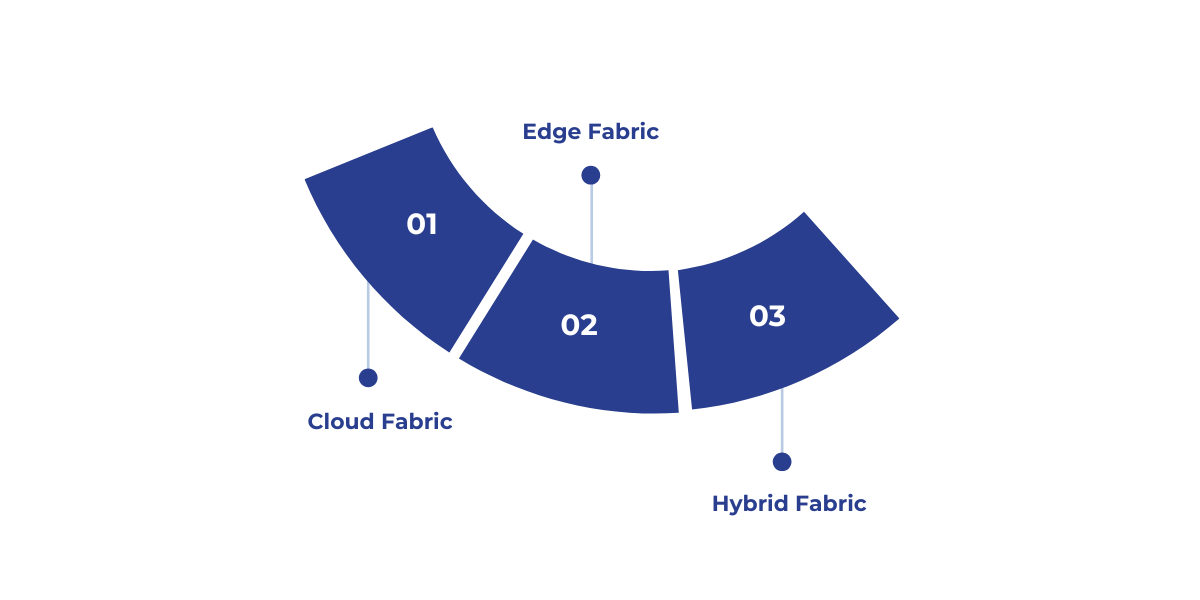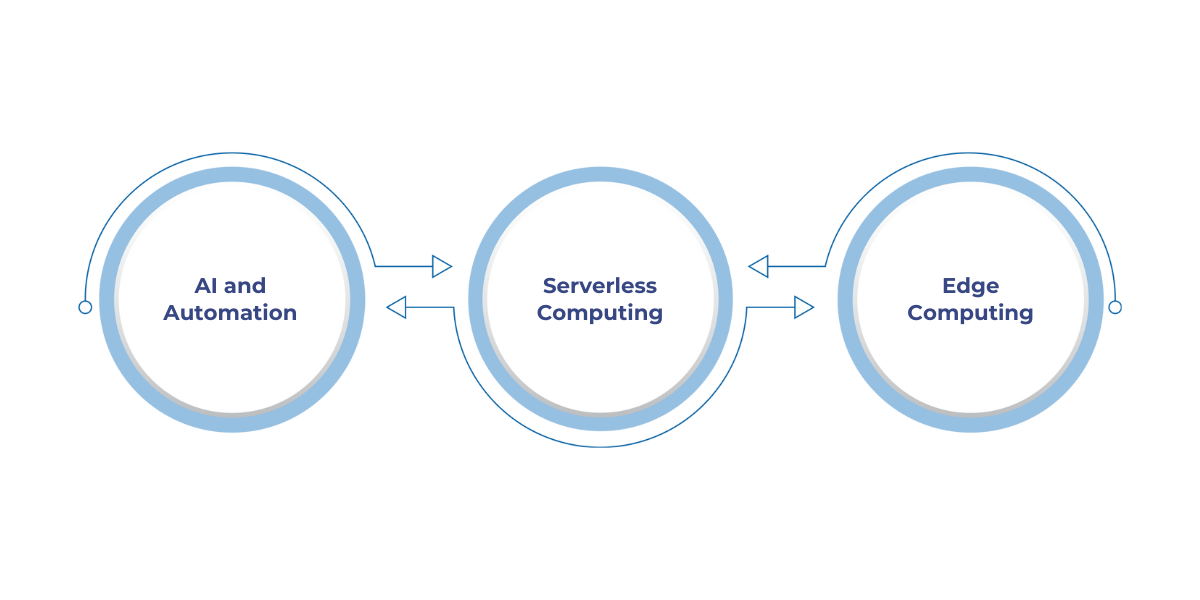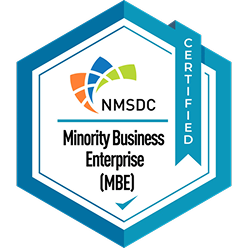

As businesses scale their operations, designing cloud architecture that is both efficient and adaptable is a growing challenge. Microsoft Fabric offers a powerful solution, but to fully use it, a clear understanding of its architecture is essential.
This is where design guides for specifiers become essential. Design guides provide a structured approach to building cloud environments, aligning components with business goals while optimizing resource utilization.
In this guide, we’ll explore the essential components of Microsoft Fabric’s architecture, focusing on the key design factors, goals, and emerging trends that will help you build a scalable and effective solution.

The primary goal of the Fabric Architecture Design Guide is to help businesses build an infrastructure that is secure, scalable, and optimized for performance.
This guide offers essential strategies for designing Microsoft Fabric to support long-term growth, security, and operational efficiency. Key focus areas include:
The guide provides a clear, structured process for deploying and configuring Fabric, ensuring that businesses can implement the architecture smoothly and efficiently without unnecessary delays.
This helps minimize setup time and complexity, resulting in a faster time-to-value.
A key focus is designing systems with scalability in mind, ensuring they can handle future business demands without requiring significant re-architecture. This includes using flexible cloud resources and planning for easy upgrades as workloads increase.
The guide ensures that the architecture is built to meet strict compliance requirements such as GDPR, HIPAA, and SOC 2.
It emphasizes the incorporation of security best practices, such as encryption, access control, and secure data handling, to protect sensitive information and ensure adherence to regulatory standards.
Example:
For a healthcare company, the design guide would ensure that the architecture not only scales as patient data grows but also adheres to HIPAA compliance requirements, ensuring encryption of sensitive data and access controls to protect patient privacy.
Microsoft Fabric's architecture is engineered to deliver scalable, high-performance, and secure data solutions. A significant advantage of this architecture is its ability to handle both structured and unstructured data efficiently, eliminating the need for separate systems and reducing complexity.
Some key components of the architecture include:
Understanding the architecture is crucial, but selecting the right fabric type for your business needs is equally important. Let’s explore the various fabric types and their best use cases.

Ideal for large-scale cloud infrastructures with extensive data processing and storage needs.
Optimized for environments where low-latency, high-speed data processing is essential, such as IoT and real-time analytics.
Designed for businesses transitioning to the cloud while maintaining on-premises infrastructure for specific workloads.
Now that we know the key components and fabric types, let’s break down the essential phases of the design process that help businesses build an efficient Fabric architecture.

A well-structured design process is key to creating an effective Microsoft Fabric architecture that meets performance, security, and scalability goals. Here’s how to approach each phase.
This phase is critical for laying the foundation. It involves gathering requirements and evaluating the current infrastructure to ensure that the design supports both current and future business needs.
In this phase, specifiers develop a detailed blueprint to map out the architecture. Key components such as compute resources, storage, and security are selected to meet both technical and business requirements.
Once the design is in place, it’s time to deploy the resources and configure the infrastructure. This phase is crucial for ensuring the system is properly set up and optimized for the business.
Post-deployment reviews ensure that the architecture is running as expected. This phase focuses on fine-tuning the system to improve performance, reduce costs, and ensure long-term efficiency.
To ensure your architecture is optimized for performance and compliance, it's important to follow the technical standards. Here’s a look at the key considerations.
For a secure, scalable, and compliant Microsoft Fabric architecture, it is essential to adhere to industry standards and best practices.
These technical specifications ensure the system performs optimally while meeting regulatory requirements. Here's a detailed look at the key considerations:
Compliance with data privacy regulations and industry standards is critical. Microsoft Fabric is designed to meet various certifications that ensure data protection and legal compliance.
One of the major benefits of Microsoft Fabric is its ability to scale dynamically to meet business demands. This ensures that businesses can grow their operations without over-provisioning resources or impacting performance.
With a solid design in place, efficient installation and setup are crucial. Let’s review the best techniques for deploying Microsoft Fabric seamlessly.
Efficient installation and setup of Microsoft Fabric ensure that the architecture runs smoothly without unnecessary delays or performance bottlenecks.Top techniques include:
Once deployed, maintaining the integrity and performance of Microsoft Fabric is key to ensuring long-term success. Some best practices include :
As we build more robust infrastructures, sustainability is a key focus. Let’s explore how Microsoft Fabric supports creating energy-efficient and sustainable cloud architectures.
As cloud services grow, sustainability becomes a key consideration in architectural design. Microsoft Fabric supports the creation of green, energy-efficient architectures.
Key Considerations:
Also Read: Steps to Develop Robust Data Pipelines from Scratch

Microsoft Fabric integrates AI directly within the platform, automating data processing and decision-making. AI-driven tools like Azure Machine Learning streamline workflows and accelerate insights.
Serverless computing in Fabric, via Azure Functions and Azure Logic Apps, allows businesses to run applications without managing infrastructure, reducing complexity and cost by scaling resources automatically.
With edge computing, Fabric processes data closer to its source, reducing latency for real-time analytics, crucial for IoT-driven industries like manufacturing and healthcare.
Also Read: A Step-by-Step Guide on Migration Strategies from Azure API for FHIR
Understanding Microsoft Fabric Architecture is crucial for designing efficient, scalable, and secure cloud infrastructures. By applying best practices, embracing innovations, and ensuring compliance, businesses can optimize operations and reduce long-term costs. The future of cloud architecture depends on effectively implementing these elements.
Need expert guidance on fabric architecture? At WaferWire, we specialize in helping businesses design and implement Microsoft Fabric architecture that aligns with performance, scalability, and security goals.
Contact us today to start optimizing your cloud infrastructure for success.
Q: How do you choose between Cloud, Edge, and Hybrid Fabric?
A: Choose Cloud Fabric for large-scale infrastructures needing dynamic scaling, Edge Fabric for low-latency, real-time analytics like IoT, and Hybrid Fabric for businesses transitioning to the cloud but requiring on-premises infrastructure for specific workloads.
Q: What’s the first step in designing Microsoft Fabric architecture?
A: The first step is planning, where you assess business goals, infrastructure, and critical workloads. This helps ensure the architecture aligns with both current and future business needs.
Q: How do technical specifications impact the design of Fabric architecture?
A: Technical specifications ensure your architecture meets industry standards for compliance (ISO 27001, SOC 2) and scalability, such as enabling auto-scaling and resource optimization to handle varying workloads.
Q: What role does Power BI play in Microsoft Fabric architecture?
A: Power BI enables businesses to visualize and analyze data with interactive reports and dashboards, providing insights into business performance directly from the data processed by Microsoft Fabric.
Q: How can businesses future-proof their Microsoft Fabric architecture?
A: Future-proofing involves designing scalable systems that can easily adapt to increased workloads and technological advancements. Key strategies include flexible cloud resources, auto-scaling, and planning for easy upgrades.

